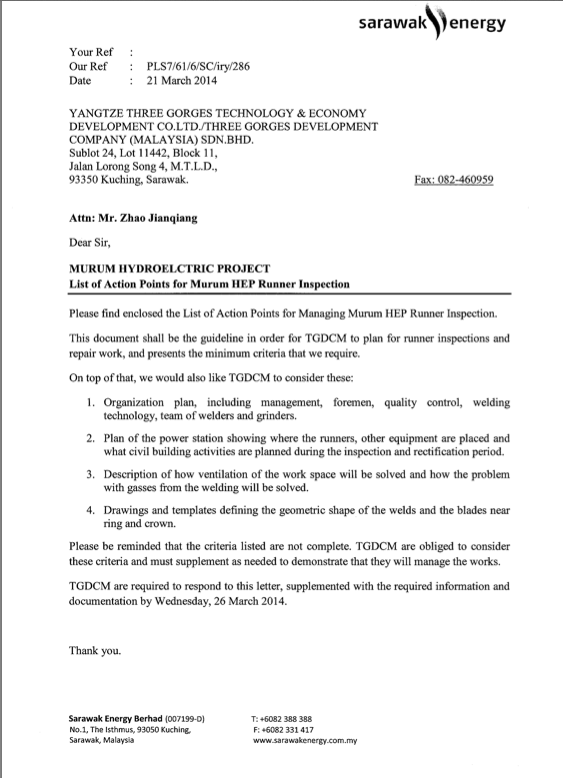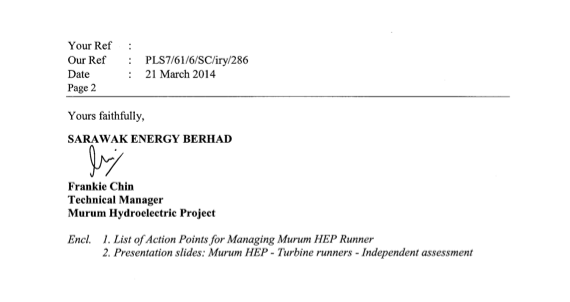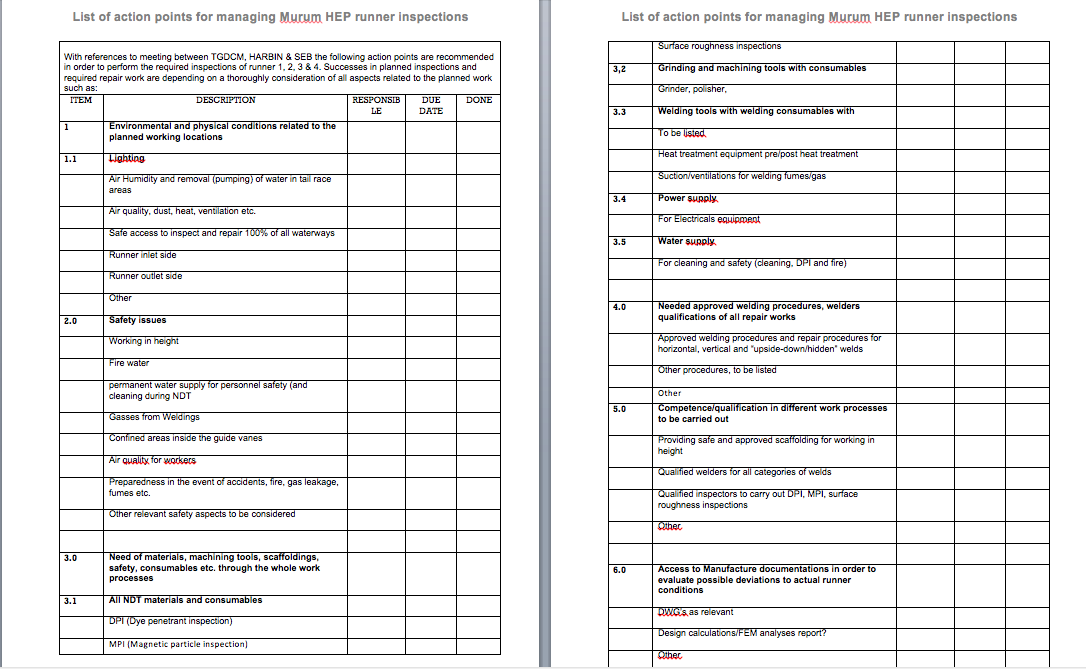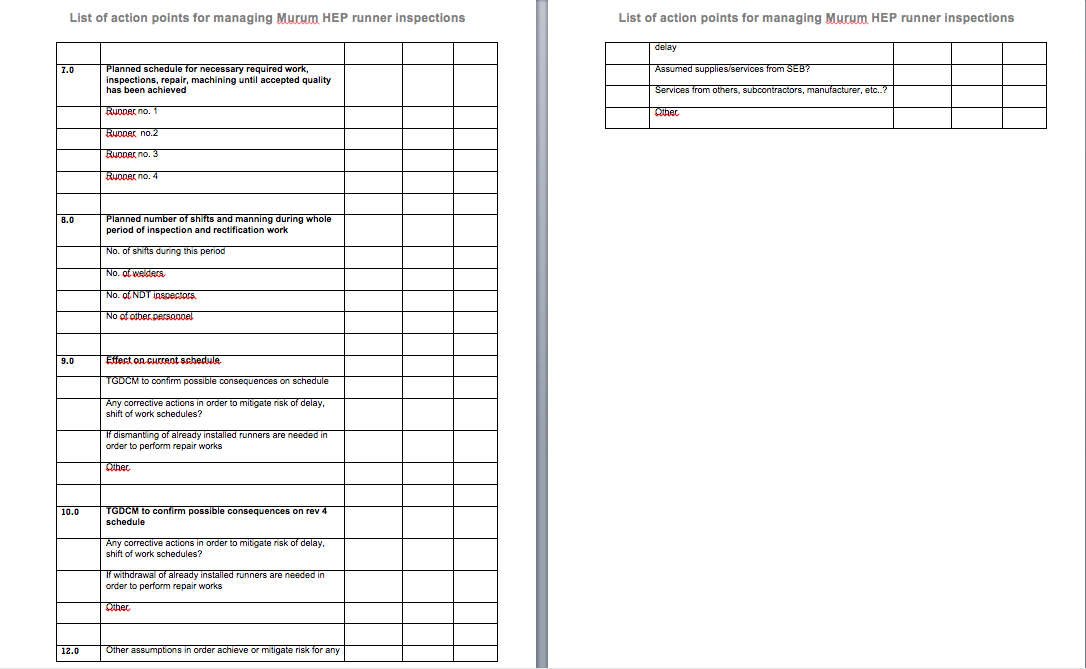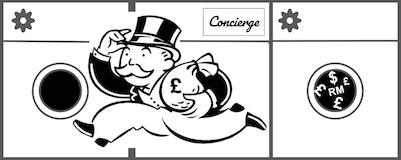
SEB boss Torstein Sjotveit has been forced to admit that the turbines installed in the Murum Dam hydro-electric plant are currently “not suitable for installation and operation”, even though they have already been installed.
He acknowledged this to be “fact” after Sarawak Report published a till now secret report into the condition of the Chinese manufactured turbines, commissioned by SEB from the Norwegian company Norconsult.
The discovery was made after inspection tests, conducted last year, and SEB received the formal report in March.
Yet, the situation was kept confidential until Sarawak Report leaked the information on Friday.
But, Sjotveit is claiming that Sarawak Report “misrepresented the facts” and is stating that the findings are “routine”.
He also claims that the major operation to repair and re-weld the turbines on site provide no cause for concern about extra costs or delays.
Above all he claims the Murum plant is “completely safe”!
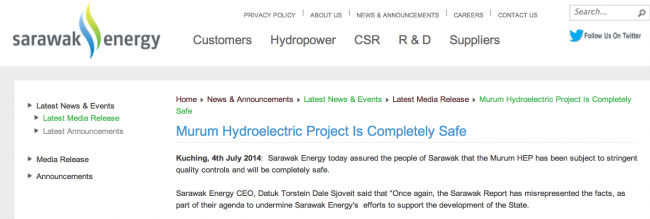
“Sarawak Energy has developed stringent processes to ensure that quality issues are detected at an early stage… The problems found on the turbine runner are rectifiable and do not pose any danger to the workers or compromise project safety. Likewise, there will not be any additional cost to SEB, as claimed by Sarawak Report…. Once again, the Sarawak Report has misrepresented the facts, as part of their agenda to undermine Sarawak Energy’s efforts to support the development of the State” [Torstein Sjotveit, SEB statement]
Early stage?

If Mr Sjotveit was back in Norway he would now be facing some probing questions and major media scrutiny, as he well knows.
One key question would be on what criteria could this inspection be described as having taken place at an “early stage”?
After all, the turbines have been found “not suitable to be installed” and yet they already are installed.
Experts have confirmed the obvious to Sarawak Report, which is that the best place to rectify defects, described as being so serious that they threaten “catastrophic breakdowns”, is back in the machine shop.
Experts have also confirmed to Sarawak Report that to attempt to repair the blades in situe at the dam site, is not only difficult and dangerous, but is highly likely to be unsuccessful, especially in the medium to longer term.
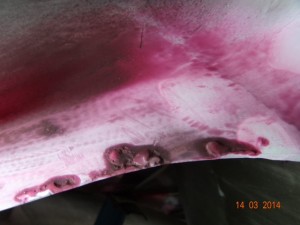
Such on site repairs are certainly “unusual”, according to the dam engineering expert Professor Daniel Kammen from California’s Berkeley University, who was consulted by Sarawak Report last week.
He said that while such practices may have occurred, he had not heard of them himself and in his opinion such a form of repair did “not bode well” for the efficiency of the hydropower station.
This is because the turbines need to be perfectly calibrated to “spin true”, he explained, and doing that on site is a “lot more painful than in the machine shop”.
Faulty turbines, like those at Murum, will grind down their bearings and soon enough break. The costs of such a breakdown in terms of production of electricity and the productivity of the dam are exponential.
And the only point of this damaging and controversial dam at Murum was supposedly to produce electricity!
So, why didn’t Torstein get his turbines checked when they first pitched up in Sarawak? Better still, why not back at the factory, where they could be easily fixed? At the very least, why not up at Murum, before they were expensively embedded in thousands of tons of solid concrete?
These key questions were not addressed in the SEB CEO’s statement. Why not?
“Easily rectified?”
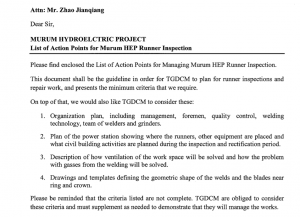
Neither does Sjotveit’s airy dismissal of the problems as being “rectifiable” match up with the terse and angry document produced by his underlings at SEB, who in March demanded a number of answers from the manufacturers (Harbin) and the constructors Three Gorges Dam Company.
We now release our leaked copy of that document and the accompanying letter (see also bottom of page).
They show that the SEB Technical Manager, Frankie Chin, was most anxious and concerned that a number of important issues needed to be evaluated and addressed with respect to the unusual decision to attempt to fix the unsuitable turbines, which were already in situ.
Top of the list was worker safety for Mr Chin. The documents shows that he wants assurances from Three Gorges that the potentially dangerous conditions for welders working at great heights in the turbine areas could be made safe. He refers to ventilation and gases and the potential for poisoning and fire.
He also makes plain the welders will be having to try to make intensely sophisticated repairs upside down and from all angles:
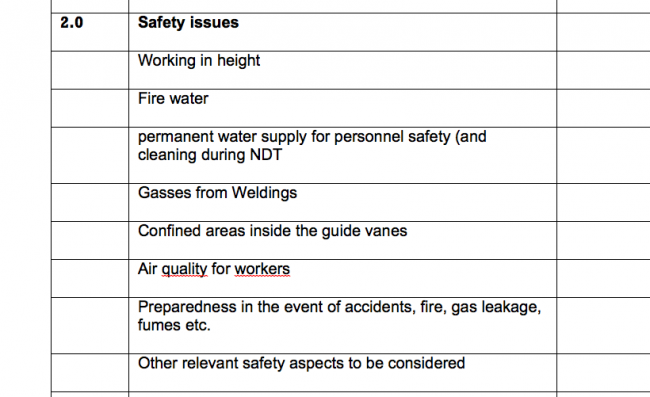
There is not only the matter of safety, there is the one of cost.
Mr Chin makes clear that a great deal of new equipment is going to be needed along with new personnel. So, why has Torstein Sjotveit argued that there are no cost implications or indeed problems of delay?
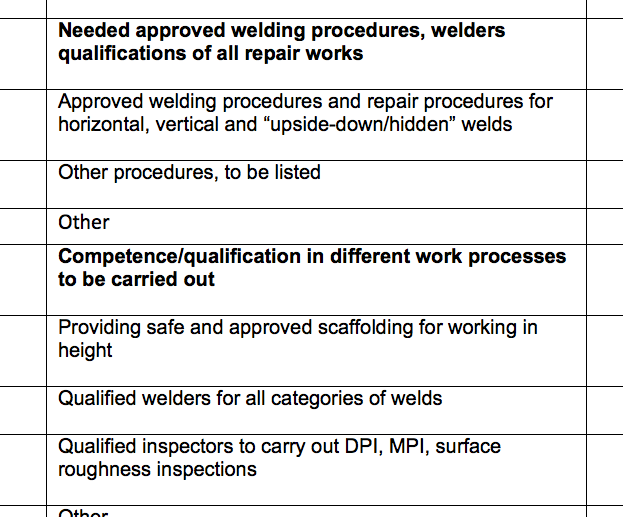
It is, of course, entirely possible that a furious SEB, who have taken delivery of such a defective and expensive product from the Chinese contractors (without realising or checking) are demanding that all the extra costs should carried by the manufacturers and Three Gorges Dam Company.
If so, Mr Sjotveit ought to spell out what has been agreed with the contractor and manufacturer on this matter to the public, who have been forced to finance this controversial dam.
Because the bluster about “no extra costs” and “no delays” is clearly untrue.
More prizes for journalists
However, instead of tackling such questions, Torstein Sjotveit has concentrated his efforts on his on-going charm offensive against the local journalists covering SCORE. This effort has mainly consisted of throwing money at press entertainment and media prizes (all paid for by the public, of course).
At yet another nice dinner for the Kuching press corps just last Friday night he said he was delighted to “agree to some suggestions” by the local press on the subject of more “training” and trips funded by SEB.
“He [Sjotveit] welcomed the proposal by CJA Sarawak for SEB to conduct training courses or workshops for journalists on what it does.
“This will help journalists to learn and understand more about energy systems and how they work.
“We would also like to bring another set of journalists to visit the Murum dam,” he said at a breaking of fast jointly organised by SEB, CJA Sarawak and KDJA at Borneo Convention Centre Kuching (BCCK) on Friday night. [The Star]
Such largesse is, of course, peanuts compared to the huge sums being spent on Murum and the SEB CEO must be congratulating himself that a compliant media has come so cheaply.
Good for how long?

The ‘repairs’ at Murum shows all the signs of a quick fix.
After all, having once said he was going to ‘develop’ Sarawak for the native people, SEB’s Norwegian boss has now decided to in fact quit in October.
He, the Chinese contractors and the manufacturers all therefore need to achieve just one thing, which is to provide the appearance of a working dam that will last for a year or so, until they are well back in their home countries, clutching their share of Sarawak’s borrowed money on the project.
Most of the rest of the profit has gone to companies owned largely by the family of the former Chief Minister, who commissioned the project.
So, If instead of lasting decades, the Murum turbines break down in a short time after a half-baked repair, will any of these people who have profited from it care?
It is the people of Sarawak, who will be left to either pay for new turbines or suffer a massive ‘white elephant’ dam that doesn’t work!
Guaranteed “completely safe”?
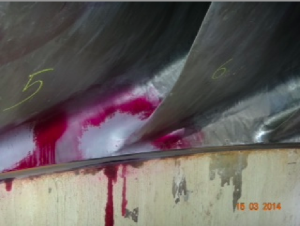
Last, but certainly not least in our list of questions, is how does Torstein Sjotveit intend to substantiate his headline claim that the Murum power plant is “completely safe”, despite admitting to the problems outlined in the report?
After all, he has botched the job so far.
Worse, his chosen method for dealing with the embarrassing problems which have arisen (ie mending the turbines in situ) is certainly not the one most recommended for ensuring the best outcome.
SEB’s repair plan is at best experimental and uncertain, whereas experts have made clear that, to be sure of a proper job, these turbines should go back to the factory or be replaced altogether.
The report by Norconsult spells out clearly the best and worst case scenarios for such turbine failures. At worst, it states, there could be catastrophic breakdowns causing flooding and fires in the pump house.
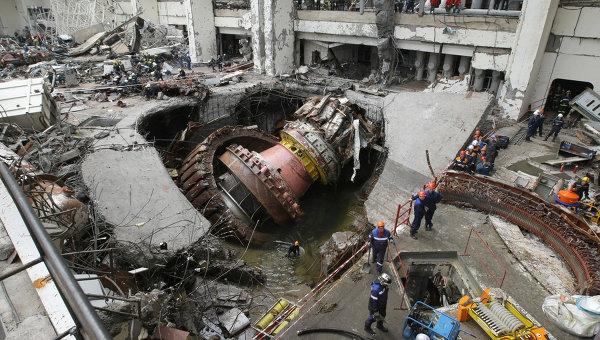
It has been pointed out already in the Malaysian media that as recently as 2009 a strikingly similar turbine problem caused a shocking accident at the Sayano–Shushenskaya hydroelectric dam in Russia. Here 75 dam workers were left dead, after a badly calibrated turbine sheered through its moorings and shot into the pump house, causing flooding and destruction.
So, what exactly did Torstein Sjotveit mean when he said that, despite these same problems being identified at Murum, the dam is “completely safe”?
!["Completely safe"? - flooding from an identical situation caused 75 deaths in Russia in 2009 [Murum Turbine Report]](/wp-content/uploads/imgcache/2014/07/pImg_34fe8a9f91e0b00517b79dde384b5c4a.png)
See Sarawak Energy (SEB)’s letter and Action Points documents below:
